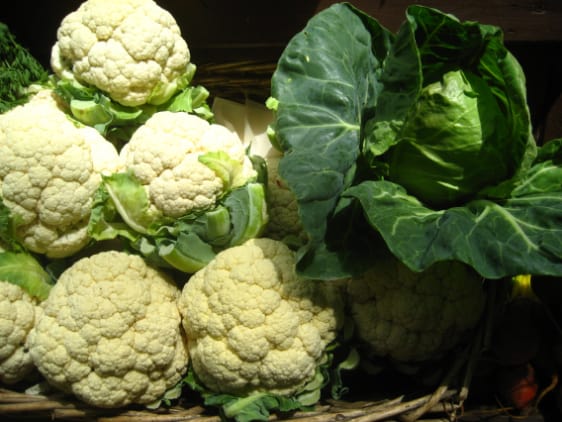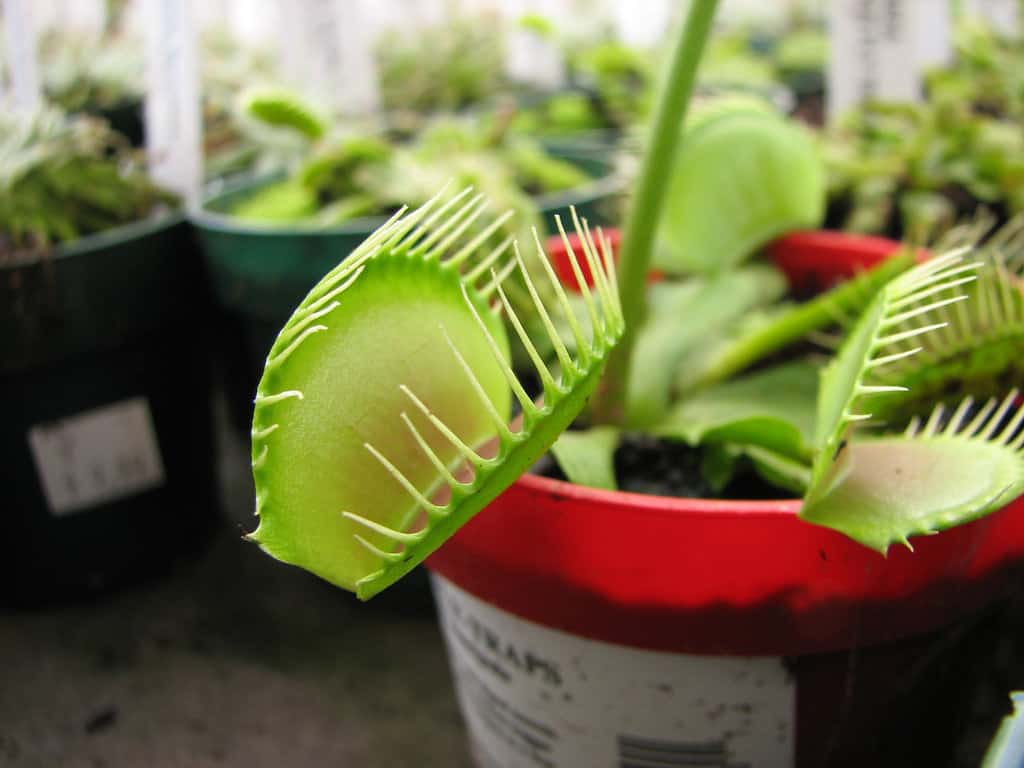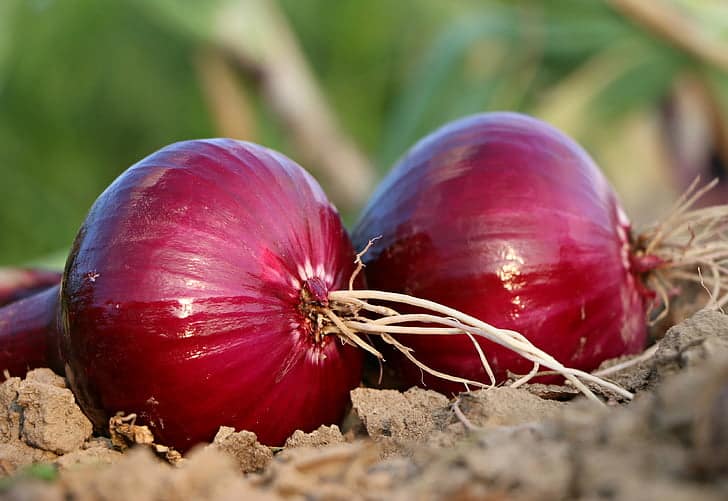Jump to:
The truth is some plants can be quite a challenge to grow and maintain. Even the most enthusiastic green-fingered Brits have faced difficulties with certain greens. Despite their seemingly simple appearance, they might leave you scratching your head.
That’s why we put together this list, from delicate flowers to vegetables. Here, we’ll explore their complexity and reveal how a greenhouse can offer a viable solution.
Read on and uncover the mysteries of these tricky plants and help you become a master gardener!
1. Orchids

You may be wondering why orchids are on the list. While being one of the most popular houseplants, they are seriously fragile.
Orchids are known for their stunning beauty and exotic allure. However, they can be challenging to grow due to their specific requirements. These plants demand precise temperature, humidity, and light conditions. Such requirements often vary depending on the orchid species. Additionally, overwatering or underwatering can quickly lead to root rot or dehydration. Talk about being needy!
How to grow
To grow orchids, maintain indirect light, water sparingly, and use a well-draining orchid mix. Keep temperatures between 65-75°F during the day and 55-65°F at night. A humidity of 50-70% is ideal.
Fertilise weakly, weekly during the growing season, and reduce in winter. Repot every 1-2 years, using orchid-friendly pots. Prevent root rot by avoiding waterlogged conditions. Orchids thrive in stable environments, so minimise drafts and sudden temperature changes. With patience and consistency, you’ll enjoy the stunning blooms of these plants.
2. Cauliflower

(Image Credit: Wikimedia Commons)
Cauliflower is a cool-season crop that can be difficult for beginners to grow. For one, its sensitivity to temperature fluctuations and pests can be tricky to work with. It prefers cool temperatures but can struggle in extreme heat or cold.
To grow cauliflower successfully, start with quality seeds or seedlings. They should get the right fertile, well-draining soil. Consistent watering and protection from pests like aphids and caterpillars are essential. However, the lengthy growth period and specific temperature requirements make it more challenging.
How to grow
Growing cauliflower in a garden greenhouse can be challenging but rewarding. Maintain a consistent temperature between 60-70°F and provide ample sunlight. Ensure well-draining soil with a pH of 6.0-7.0. Water consistently, keeping the soil moist but not waterlogged.
Use organic fertilisers and monitor for pests like aphids. Protect cauliflower from extreme temperatures. Regularly check for signs of nutrient deficiencies and adjust as needed. With a controlled environment, you can cultivate healthy and delicious cauliflower. It’s time to make the most of your wooden grow house!
3. Venus flytrap

Venus flytraps captivate with their carnivorous nature. However, they require a precise environment to thrive. These plants need a mix of bright, indirect light and high humidity levels. Growing them in the wrong soil or water can lead to their demise.
Beginners can try providing them with a mix of sphagnum moss and perlite. Yet, maintaining the right moisture levels and avoiding overfeeding can be challenging. It may be best to buy Venus flytraps from sources that specialise in carnivorous plants.
How to grow
Growing Venus Flytraps is tricky but fun. Use acidic, well-draining soil like a 1:1 mix of sphagnum moss and perlite. Keep the soil consistently moist with distilled water or rainwater. Place them in bright, indirect sunlight. Maintain a humid environment, as they thrive with 50-60% humidity.
Allow the soil to dry slightly between waterings, simulating their native bog habitats. Avoid tap water and fertilise sparingly. Embrace patience; these carnivorous plants can take time to adjust. With care, your Venus Flytrap will captivate with its unique predatory nature.
4. Celery

(Image Credit: Wallpaper Flare)
Celery demands consistent moisture and a long growing season. It requires fertile soil with good drainage and adequate spacing between plants.
Growing celery from seeds in a polycarbonate greenhouse can be particularly tricky. This is because they need proper temperature and humidity for germination. Even after successful germination, maintaining the right moisture levels can be delicate.
Novice gardeners might find it easier to start with celery seedlings from a nursery. Even so, keeping a watchful eye on their water needs is essential. For those new to gardening, celery may be better suited for a more experienced hand.
How to grow
Start indoors 8-10 weeks before the last frost. Plant in rich, well-draining soil with a pH of 6-6.5. Keep seedlings cool (60-70°F) and well-lit. Transplant when they have 3-4 leaves. Water consistently, ensuring the soil stays consistently moist. Celery loves consistent moisture but detests waterlogged roots. Use a balanced fertiliser every 3-4 weeks.
Blanching can improve flavour; wrap stalks with cardboard when they’re about a foot tall. Patience is key — celery grows slowly but is worth the wait.
5. Onions

Onions are a staple in the kitchen, but they can pose difficulties for novice gardeners. They require well-draining soil and consistent moisture during the growing season. Timing is crucial; planting them at the wrong time can result in small bulbs or premature bolting. Onions can also be susceptible to pests and diseases.
While some beginner-friendly onion varieties exist, mastering their cultivation requires attention to detail. Moreover, understanding the right harvesting techniques is important. Thus, it may be wise to start with easier-to-grow vegetables before attempting onions. Have a look at these winter greenhouse plants, for instance.
How to grow
With the right care, you’ll harvest flavorful bulbs. Choose a well-draining soil with a pH of 6-7. Start with onion sets or seeds indoors and transplant them outside after the last frost. Space plants well to ensure good air circulation.
Water consistently, keeping the soil evenly moist. Fertilise every few weeks with a balanced fertiliser. Mulch helps retain moisture and suppress weeds. Onions appreciate cool temperatures and plenty of sunlight. Harvest when the tops are yellow and fall over, then cure before storage.
6. Wasabi

Wasabi, a pungent and sought-after plant, is tricky to grow outside its native habitat. It thrives in cold, shaded, and consistently moist conditions. In fact, it often mimics the environment near mountain streams.
Maintaining these conditions in a typical garden setting can be extremely challenging. The plant’s sensitive roots require constant moisture without becoming waterlogged. Beginners may find it difficult to achieve the right balance.
Aspiring gardeners should consider starting with more forgiving herbs or vegetables. Leave wasabi cultivation to seasoned horticulturists with specialised expertise.
How to grow
Provide a shaded environment with temperatures around 50-60°F. Use well-draining, slightly acidic soil. Keep the soil consistently moist, as wasabi thrives in damp conditions. Adequate humidity is crucial, so consider misting the plants. Fertilise sparingly, avoiding high-nitrogen fertilisers.
Patience is key as wasabi grows slowly. Harvest the rhizomes after about two years. With attention to these details, you can cultivate this flavorful and sought-after plant.
7. Melons

Melons may be tempting to grow due to their delicious rewards. However, they pose challenges for beginners due to their:
- long growing season
- specific climate needs
Melons require warm temperatures and full sun. This makes them unsuitable for colder climates or short summers. Cue heated metal greenhouses.
Moreover, they need well-draining soil and consistent watering, especially during fruit development. The plants are also susceptible to various pests and diseases. Novice green thumbs might find focusing on simpler fruits and vegetables easier. They may reconsider growing melons until they gain more gardening experience.
How to grow
Choose a sunny, well-drained location with rich soil. Plant seeds or seedlings after the last frost, ensuring proper spacing. Provide consistent water, especially during flowering and fruiting stages. Mulch to retain moisture and suppress weeds. Support vines and elevate fruits to prevent rot. Avoid over-fertilising to discourage excessive foliage growth.
Be patient; melons may take 70-90 days to mature. Harvest when the stem easily separates from the fruit. With care, you’ll savour the sweet rewards of homegrown melons.
Round-up
Gardening offers a plethora of health benefits, including reducing stress. But you have to ensure not to come across some plants that will stress you out more than calm your nerves!
But fear not! With expert guidance and a greenhouse, even the most demanding plants become more manageable. A potting shed also makes a practical gardening companion. It provides a dedicated space to nurture delicate seedlings and tend to your greens. A well-insulated shed also makes a great plant house, housing these winter vegetables!
Shop Reverse Apex Workshop









